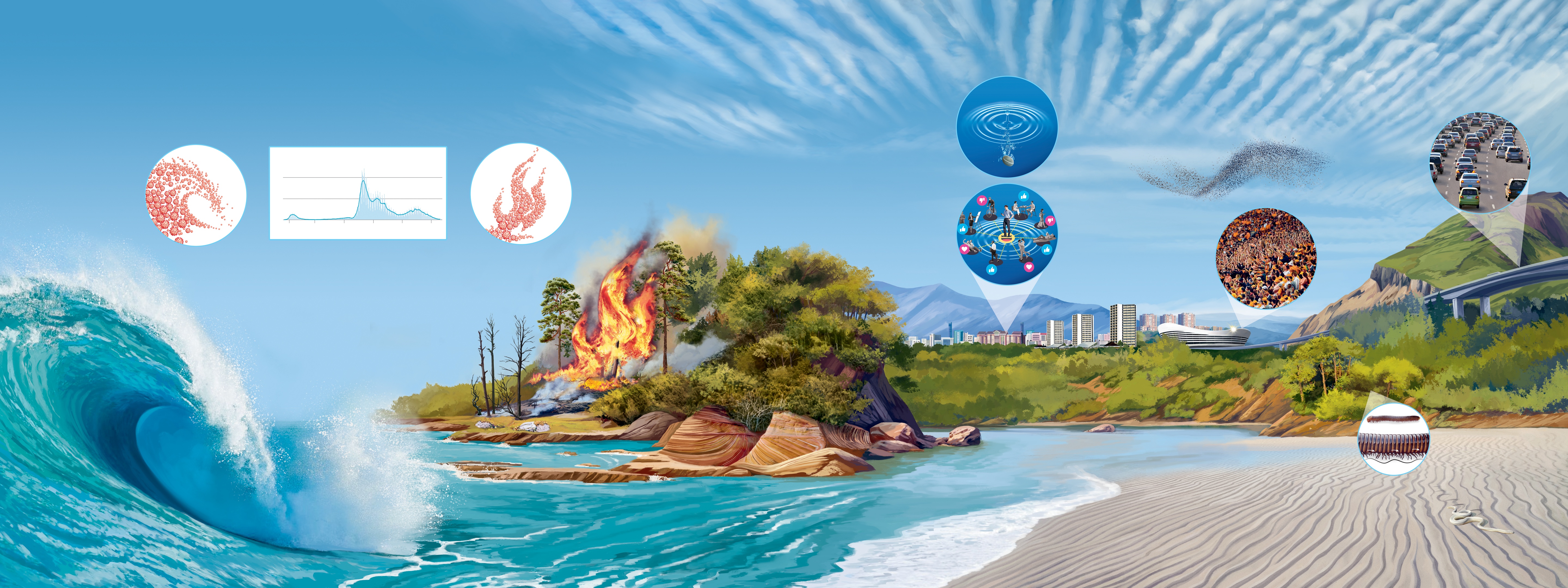Waves Move the World
How do we use the term ‘wave’ in everyday life? And what is the relationship between the everyday uses of the term and its use in physics?

A Steady Rise and Fall
Some terms for physical waves are part of our everyday language: water wave, sound wave, microwave. Other expressions, however, have little in common with physical waves: a wavy line, a waving flag or a permanent hair wave refer solely to the shape of a wave or to something that moves in a wave-like fashion. The things described do neither oscillate nor propagate.
Other wave terms refer to events that arise periodically, just like a physical wave: heat waves, waves of refugees, waves of sympathy, flu waves and coronavirus waves. In addition, the choice of the term ‘wave’ can unconsciously or deliberately convey a feeling of being overwhelmed – comparable to a powerful water wave that can overrun us, sweep us away or knock us down. A hot spell becomes a heat wave and a movement of refugees becomes a wave of refugees. How would the perception of the COVID-19 pandemic change, for example, if it were not compared to a wave, but to a smouldering fire that breaks out occasionally in places?
Connected People
Phenomena such as waves of fashion trends, waves of enthusiasm and flu waves take place within the network of society. Through their contacts, people can ‘infect’ each other with diseases, ideas and enthusiasm and thus contribute to a wave in society. How exactly this happens depends on the connections within the network. With the growth of cities, more and more people are coming together in smaller spaces; with technological progress, mobility and connectedness are increasing. Information and diseases can thus spread around the globe at an increasingly fast rate.
What waves in society have in common with physical waves is the principle of spreading out. Instead of wave energy, however, it is viruses, ideas, emotions, etc. that propagate. Due to the complexity of societal interconnectedness, the possibilities for prediction are limited. We know, for example, that there will be a flu wave every year, but we know neither where nor how severe it will be.
However, waves in society can be influenced. For example, we can decide whether or not to share and spread something on social media. Every individual is part of the societal network and can consciously – within the scope of his or her possibilities – contribute to the creation, strengthening or weakening of a wave. In this way, we all bear responsibility for the formation of opinions, values, norms and entire world views.
Wave-Like Movements
The stadium wave is created by successive movements. That is why we think we are seeing a spreading wave. As everyone in the stadium has a fixed place and knows exactly when to jump up, the propagation of the stadium wave is orderly and the wave movement is clearly visible.
The swarm behaviour of some animals, the spread of a traffic jam by braking cars and the movement of centipede legs can also look like a spreading wave. In contrast to the stadium wave, however, these phenomena are not described with wave-related expressions in common language use.
In comparison with physical waves, some similarities and differences stand out. While an atom cannot escape the transmission of a sound wave, a person in a stadium does not have to jump up just because everyone else does. However, most of the time they do. Studies have shown that people fall under the spell of the wave if initially at least 25 people jump up at the same time. The waves usually run clockwise at about 20 seats per second and a wavelength of about 15 seats. The reasons for this are unclear. What if we compared the direction of stadium waves in countries with right- and left-lane traffic? What if a stadium was filled with only left-handed people?